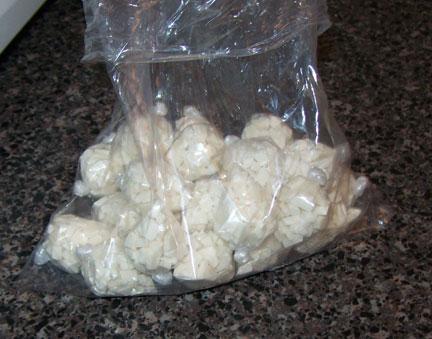

If you do this type of math in the non-metric system such as ounces then your ability to determine profit is going to be harder because you are actually going to have to convert ounces to grams or vice versa. This person would net a net profit of 10 (profit in each gram) multiplied by 30 grams and thus would make a total profit of $300 after his 30 grams were all sold. This person would be making a profit of $10 per gram on his/her sales. This person then resold at a price of $50 per gram. Now lets say that the person that purchased the cocaine for $40 per gram and got a total of only 30 grams. Multiply $14 (profit per gram) x 1,000 grams and this equals $14,000 total profit. This is easy math when you really think about it. If the dealer continues to sell in terms of price per gram, then after the entire kilogram is sold then this person would have a profit of $14,000. If this person turns around sells a quantity of cocaine at $40 per gram then the dealer is making $14 in profit per gram. For example, if a person purchases one kilogram (1,000 grams) for $26,000 then the price per gram is $26. The math in order to determine profit margins are more easily understood when using the metric system. Since a kilogram of cocaine is an exact 1,000 grams it actually makes more sense for a drug dealer to use the metric system. From this level on up, the terms quarter kilo, half kilo, whole kilo, etc are commonly spoken. Not all, but most will start purchasing quantities that are referred to their metric system weights. This level would equate to be about 250 grams (8.81 ounces). However, once a dealer starts dealing in more than about 8 ounces, the dealer will now converse in metric system language. At this lower level, the amount purchased and sold will deal with the term "ounce". Typically, a lower level drug dealer in the United States will deal in ounce level quantities of cocaine. In fact, many law enforcement officials don't know this either but most everybody has at least some familiarity with the term "Kilo". Most lower level drug dealers and users do not know that a kilogram has 1,000 grams in it.

This leads to an interesting mixture of the metric system in terms of drug dealing. Instead of Kilograms, people in the U.S.A. However, the USA (United States of America) does not use this system. A metric ton of cocaine weighs 1,000 kilograms, a short ton contains 907 kilos and a long ton has 1016 kgs.Ī "Short Ton" is the equivalent of 2,000 pounds (907 kilograms).Īlmost the entire world uses the International System of Units, commonly known as the "Metric System". Cocaine will usually be packed into large sacks where many individual kilograms are inside. This is especially common when a seizure takes place at sea by the military such as the Coast Guard. Sometimes large seizures of cocaine take place, where a ton or several tons of cocaine are seized. The standard package weight of cocaine is one kilogram and then is later broken into smaller weights for sale and consumption. A kilo actually weighs 2 pounds and about 3.27 ounces (35.27 ounces). This doesn't mean that it weighs two pounds and two ounces. Although a kilo does weigh out to be about 2.2 pounds. * * * A kilogram of cocaine is often referred to as being 2.2 pounds of cocaine. 7 grams = Quarter ounce (two eight balls)ġ25 grams = 4.40 ounces "Big Eight" (Eighth of a kilo)Ģ50 grams = 8.81 ounces "Quarter Kilogram"ħ50 grams = 26.45 ounces "Three quarters of a kilo"


 0 kommentar(er)
0 kommentar(er)
